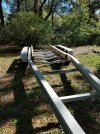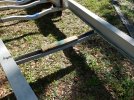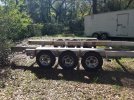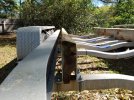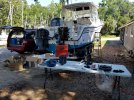Looking for advice here...
I just purchased a 3 axle 18,000# capacity Venture aluminum I Beam Trailer for my 330.
I think I have it set up pretty well but am looking to fine tune it.
If you have the measurements or a photo of your bunk placement for your 330, I'd love to see them.
Thank you!
Jack
I just purchased a 3 axle 18,000# capacity Venture aluminum I Beam Trailer for my 330.
I think I have it set up pretty well but am looking to fine tune it.
If you have the measurements or a photo of your bunk placement for your 330, I'd love to see them.
Thank you!
Jack


